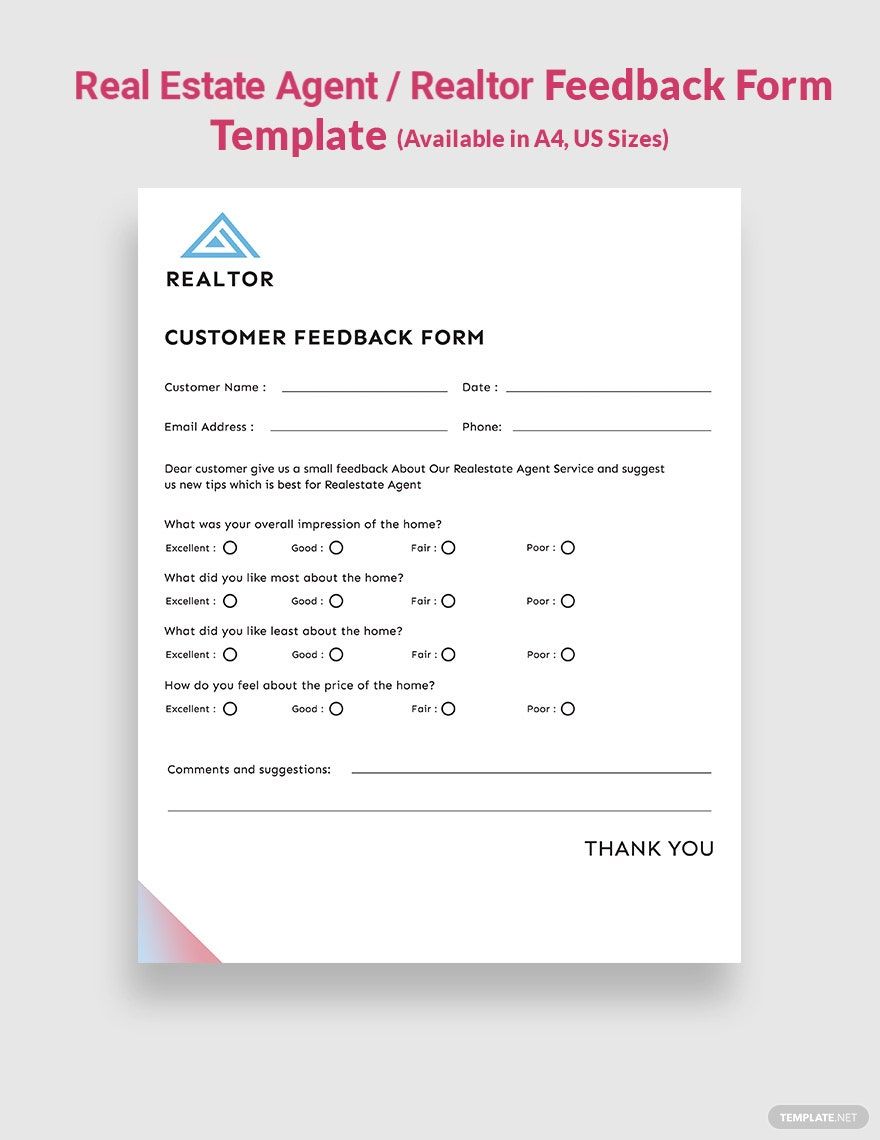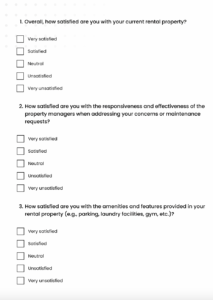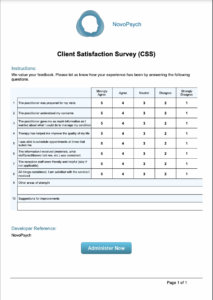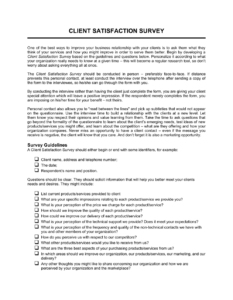There are many benefits to using a real estate feedback survey template. First, it can help agents and companies to identify areas where they are excelling and areas where they need to improve. This information can be used to make changes to the way they do business, which can lead to increased customer satisfaction and more referrals.

Second, feedback surveys can help agents and companies to build relationships with their clients. By showing clients that they value their feedback, agents and companies can create a sense of trust and rapport. This can lead to repeat business and positive word-of-mouth marketing.
Key Components of a Real Estate Feedback Survey Template
A real estate feedback survey template typically includes several key components:
1: Contact Information
This section should include the client’s name, contact information, and the date of the survey.
2: Overall Satisfaction Question
This question asks the client to rate their overall satisfaction with the agent or company on a scale, such as from 1 to 5.
3: Specific Feedback Questions
These questions ask the client to provide specific feedback about their experience, such as:
- How satisfied were you with the agent’s communication?
- How helpful was the agent in finding you a home?
- How satisfied were you with the agent’s negotiation skills?
4: Open-Ended Feedback Question
This question gives the client an opportunity to provide any additional feedback or comments they have.
5: Demographic Questions
These questions ask the client to provide some demographic information, such as their age, income, and location.
Summary
The feedback survey should be designed to be clear, concise, and easy to complete. It should also be tailored to the specific needs of the agent or company.
How to Create a Real Estate Feedback Survey Template
Creating a real estate feedback survey template is a relatively simple process. Here are the steps involved:
1: Define the purpose of the survey.
What do you want to learn from the feedback? Are you looking to improve customer satisfaction, identify areas for improvement, or track agent performance? Once you know the purpose of the survey, you can start to develop the questions.
2: Choose the right questions.
The questions you ask in your survey should be specific, relevant, and easy to answer. Avoid asking open-ended questions that can be difficult to quantify. Instead, opt for closed-ended questions that provide you with specific data.
3: Use a professional survey template.
There are many professional survey templates available online. Using a template can help you to create a survey that is visually appealing and easy to complete.
4: Keep it short and sweet.
People are more likely to complete a survey if it is short and to the point. Aim for a survey that takes no more than 5-10 minutes to complete.
5: Test the survey.
Before you launch the survey, test it with a small group of people. This will help you to identify any errors or confusing questions.
6: Distribute the survey.
Once you are satisfied with the survey, distribute it to your clients or customers. You can do this via email, social media, or your website.
7: Analyze the results.
Once you have collected the feedback, take the time to analyze the results. This information can be used to improve your services and identify areas for improvement.
Summary
Creating a real estate feedback survey template is a valuable way to collect feedback from your clients or customers. By following these steps, you can create a survey that is effective and easy to complete.
A real estate feedback survey template is a valuable tool for agents and companies in the real estate industry. By collecting feedback from clients and customers, agents and companies can identify areas where they are excelling and areas where they need to improve. This information can be used to make changes to the way they do business, which can lead to increased customer satisfaction and more referrals.
Creating a real estate feedback survey template is a relatively simple process. By following the steps outlined in this article, you can create a survey that is effective and easy to complete. Once you have collected the feedback, take the time to analyze the results. This information can be used to improve your services and identify areas for improvement.



